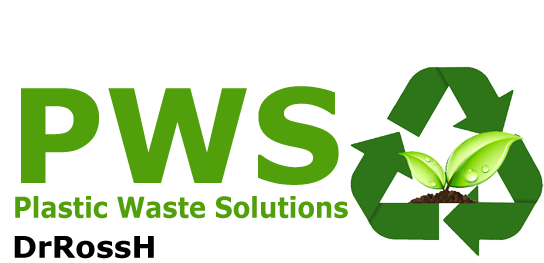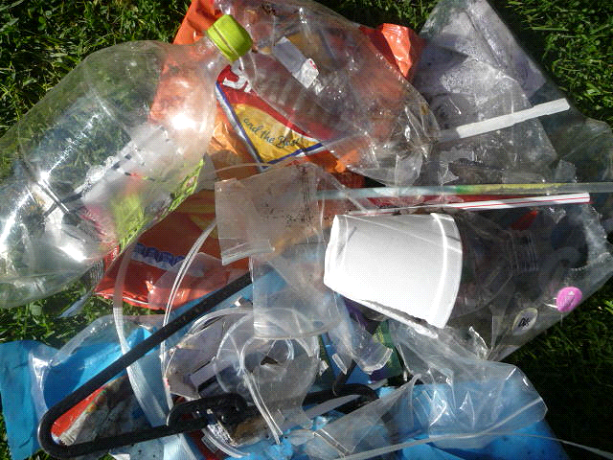PP recycling key to P&G sustainability targets – USA
Posted on April 23, 2018 by DrRossH in GeneralPlastics recycling, including the use of what it calls a breakthrough effort with polypropylene, plays a part in Procter & Gamble Co.’s newest sustainability goals.
The Cincinnati-based consumer goods giant is out with new environmental goals for 2030, while indicating the company already has achieved some of its previously set goals for 2020.
Dubbed “Ambition 2030,” the company said the new goals “aim to enable and inspire positive impact on the environment and society while creating value for the company and consumers.”
P&G has some of the most well-known and popular brands in the world, with names like Dawn, Tide, Gillette, Head & Shoulders and Pampers. The company operates in about 70 countries around the globe and plastics play a part in both packaging and some products, such as diapers.
The company has been using recycled plastics in packaging since the late 1980s, P&G said, but recycled PP has been “limited due to the lack of availability of high-quality material.”
But that is expected to change over time.
The company has developed a new technology that removes color, odor and contaminants from recycled PP and is in the process of commercializing the technology with a firm called PureCycle Technologies near Ironton, Ohio.
PureCycle, which is purchasing former Dow Chemical Co. property for the project, is operated by Innventure, a Chicago-based company that aims to commercialize innovative technology starting with P&G’s proprietary knowledge.
Preventing ocean plastics
The new set of goals includes efforts to keep all P&G packaging out of the oceans as well as improving recycling solutions for absorbent hygiene products.
Ocean plastics, and those plastics captured from the environment before they reach the water, are a trending topic for both society and the plastics industry. Citizens and companies are putting a greater focus on the problems and possible solutions.
“We will find solutions so no P&G packaging will find its way into the ocean,” the company pledged.
With underdeveloped waste management a key issue in some countries, trash is simply dumped at shorelines as residents allow high tide to take the material away. Littering and inadequate materials collection farther inland also lead to plastics and other trash finding its way into tributaries that feed into oceans.
Last year, P&G created a limited-edition Head & Shoulders shampoo bottle made partially from recycled plastic collected at beaches. Efforts like that will help push demand, something recycling industry leaders say is key in finding success.
The company also indicated its 20 leadership brands “will enable and inspire responsible consumption through packaging that is 100 percent recyclable or reusable, launching more sustainable innovations and building trust through transparency and sharing our safety science.”
Along with plans for packaging, P&G said the company’s 2030 goals will include efforts to improve efforts to recycle absorbent hygiene products such as diapers and those used for feminine hygiene and incontinence. Those products often contain a plastic in their design.
“Building on our progress to date, our 2030 goals seek to address two of the world’s most pressing environmental challenges: finite resources and growing consumption,” Virginie Helias, vice president of global sustainability for P&G, said in a statement. “We know P&G alone does not have all the answers. It will take partnerships and collaboration to make meaningful progress and our brands will develop innovations to take responsible consumption to the next level.”
While the company is rolling out 2030 goals, P&G also said it has achieved its 2020 environmental goals regarding reduced energy use, reduced truck transportation and use of virgin wood fiber certification.
The company continues to work on greenhouse gas emissions reductions and increased use of renewable energy, and it has reduced packaging by approximately 13 percent toward its goal of a 20-percent reduction per consumer use.
P&G also is diverting 72 percent of its manufacturing waste from landfills and wants that number to reach 100 percent by 2020.
A goal of ensuring that 90 percent of product packaging is either recyclable or that programs are in place to recycle that material is at 86 percent and the company said it has a “strong, ongoing effort to further increase recyclability.”
Regarding the goal of doubling the use of recycled resin in plastic packaging, P&G indicated it is 32 percent of its way toward its 2020 goal.
We must admit this reads like corporate stalling tactics. 2030 is 12 years away. What would take so long do make these changes?
Plus making every thing recyclable is not a goal to be overly excited about. That ensures nothing about their packaging not getting into the oceans. If they were concerned about it why wouldn’t they put a refundable deposit on their bottles to make sure they get handed back? That would ensure they maintain quite good control over their packaging disposal.

 How many people today grab a takeaway coffee cup from the local cafe to drink on the go? We don’t know, but the number must be enormous.. Most every one of the above have a plastic top that will last 100s of years. Some cafes still use plastic cups that last a similar time. Is 10 minutes of coffee worth 100s of years of trash?
These items can be seen littering our gutters and on our streets all over the place. If they were all cardboard, they would still be littered, but they would, at least, be gone in a short time.
They do not need to be made of plastic.
How many people today grab a takeaway coffee cup from the local cafe to drink on the go? We don’t know, but the number must be enormous.. Most every one of the above have a plastic top that will last 100s of years. Some cafes still use plastic cups that last a similar time. Is 10 minutes of coffee worth 100s of years of trash?
These items can be seen littering our gutters and on our streets all over the place. If they were all cardboard, they would still be littered, but they would, at least, be gone in a short time.
They do not need to be made of plastic.
 On the way home from the gym last week, a distance of about 1 km (1/2 mile), I counted the items of plastic litter on the curb as I walked. In that short distance I counted 63 pieces of plastic litter. Plastic drink bottles, bottle tops, candy wrappers, plastic film, polystyrene fragments etc. That seemed to be a lot to me. I guess it is a generational thing. Our parents would have been horrified to see that amount, whereas it seems to go unnoticed by our youth of today. In another 20 years how many pieces will there be on this stretch, -- 200? What will today’s youth think of that new amount then when they are older? Will their children be so readily accepting of a higher amount of litter?
On the way home from the gym last week, a distance of about 1 km (1/2 mile), I counted the items of plastic litter on the curb as I walked. In that short distance I counted 63 pieces of plastic litter. Plastic drink bottles, bottle tops, candy wrappers, plastic film, polystyrene fragments etc. That seemed to be a lot to me. I guess it is a generational thing. Our parents would have been horrified to see that amount, whereas it seems to go unnoticed by our youth of today. In another 20 years how many pieces will there be on this stretch, -- 200? What will today’s youth think of that new amount then when they are older? Will their children be so readily accepting of a higher amount of litter?
Discussion · No Comments
There are no responses to "PP recycling key to P&G sustainability targets – USA". Comments are closed for this post.Oops! Sorry, comments are closed at this time. Please try again later.